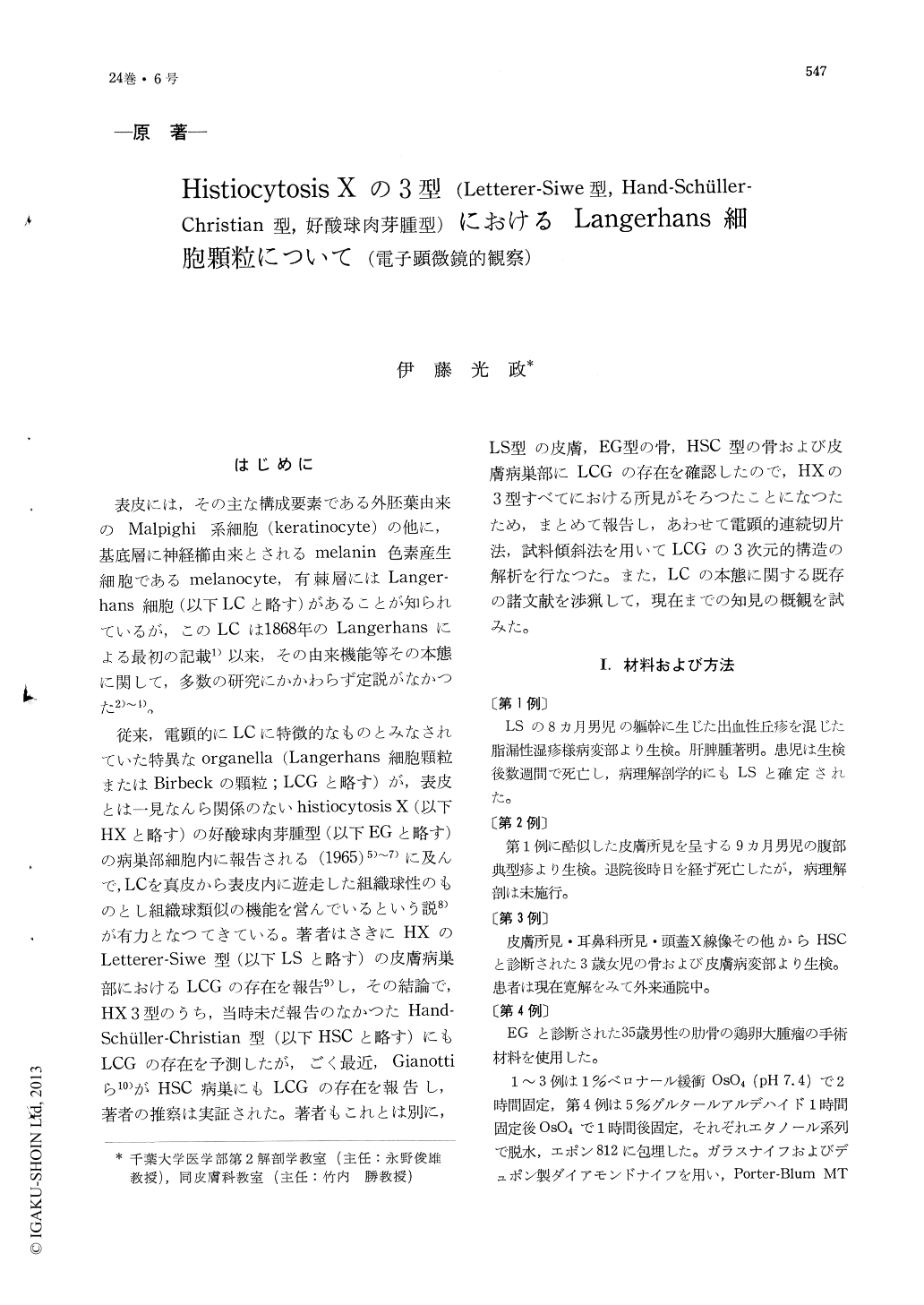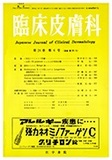Japanese
English
- 有料閲覧
- Abstract 文献概要
- 1ページ目 Look Inside
はじめに
表皮には,その主な構成要素である外胚葉由来のMalpighi系細胞(keratinocyte)の他に,基底層に神経櫛由来とされるmelanin色素産生細胞であるmelanocyte,有棘層にはLanger—hans細胞(以下LCと略す)があることが知られているが,このLCは1868年のLangerhansによる最初の記載1)以来,その由来機能等その本態に関して,多数の研究にかかわらず定説がなかつた2)〜4)。
従来,電顕的にLCに特徴的なものとみなされていた特異なorganella (Langerhans細胞顆粒またはBirbeckの顆粒;LCGと略す)が,表皮とは一見なんら関係のないhistiocytosis X (以下HXと略す)の好酸球肉芽腫型(以下EGと略す)の病巣部細胞内に報告される(1965)5)〜7)に及んで,LCを真皮から表皮内に遊走した組織球性のものとし組織球類似の機能を営んでいるという説8)が有力となつてきている。著者はさきにHXのLetterer-Siwe型(以下LSと略す)の皮膚病巣部におけるLCGの存在を報告9)し,その結論で,HX3型のうち,当時未だ報告のなかつたHand-Schüller-Christian型(以下HSCと略す)にもLCGの存在を予測したが,ごく最近,Gianottiら10)がHSC病巣にもLCGの存在を報告し,著者の推察は実証された。著者もこれとは別に,LS型の皮膚,EG型の骨,HSC型の骨および皮膚病巣部にLCGの存在を確認したので,HXの3型すべてにおける所見がそろつたことになつたため,まとめて報告し,あわせて電顕的連続切片法,試料傾斜法を用いてLCGの3次元的構造の解析を行なつた。また,LCの本態に関する既存の諸文献を渉猟して,現在までの知見の概観を試みた。
The so-called Langerhans cell granules, which had previously been regarded as specific for the epidermal Langerhans cell, were proved in three types of histiocytosis X, namely Letterer-Siwe type, Hand-Schuller-Christian type, and eosinophilic granuloma type. The fact that the same highly characteristic subcellular structure was found in these three diseases of unknown etiology as well as in the epidermal Langerhans cell lends further support on one hand to the view based on the light microscopic observations that they are the diseases of the same entity which should be considered under the general name of "histiocytosis X", and it also supports the hypothesis that the epidermal Langerhans cell itself is a histiocyte of mesenchymal origin. Discovered chiefly in the cytoplasm, the granules were occasionally detected in the nuclear cytoplasmic infolding, free in the nucleus, and in the extra-cellular space.
Serial sections of the granules near and at the cell surface rendered evidence for genesis of these granules from infolding of the cytoplasmic membrane, and also elucidated their three-dimensional structure as a disk-shaped and cup-shaped membrane-coated orthogonal net of particles with one or more vesicular swellings near its margin. The specimen tilt method revealed that the central core of the granules was truly made up of an orthogonally arranged network of small particles just as Sagebiel and Reed proposed. The models presented here can explain various configurations of the granules met in individual electron micrographs.

Copyright © 1970, Igaku-Shoin Ltd. All rights reserved.


